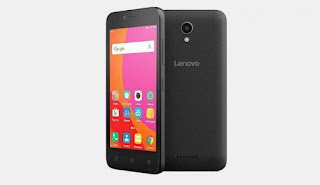QMobile Noir i5.5 - Big Screen Entertainment!
QMobile has unleashed Noir i5.5 for those professional users who wants to carry every all necessary tool in their pockets to do their professional jobs. No doubt it is true that QMobile Noir i5.5 is equipped with all those features that a professional man need in its daily routine.
5.5 inches IPS touch screen that give you HD resolution along with multi-touch support.QMobile Noir i5.5's color reproduction is also admirable because it support up to 16M colors. Behind its LCD a powerful 1.3 GHz quad core processor is ticking to produce enormous power for Noir's i5.5 to run its all functions properly. 1 GB of RAM is also attached with the processor to make the multi-tasking stable for its users. Further more QMobile Noir i series is quite dashing in looks also. 8 GB built-in storage provide open space to install large number of games along with music and videos. If you still feel that the memory of QMobile's Noir i5.5 is not enough for you then a micro SD card slot is also installed inside the device that support up to 32 GB.
Android OS V6.0 marshmallow is running inside the QMobile Noir that brings Noired experience for its users. Along with all these stunning features 8 MP camera also features LED flash on the back of this phone that capture images of fine quality. QMobile i5.5 brings the QMobiled experience with 2 MP front selfie camera with face beauty mode which modify the image in such a way that your selfie don't need any kind of further editing. QMobiles Noir i5.5 packed 2500 mAh battery for its user so that they use their phones continuously without connecting it to charger for almost one long day. It also support 3G connection so that you enjoy high speed internet with latest Q Mobiles Noir i5.5.
Specifications:
- OS: Android 6.0 (Marshmallow)
- SIM Slot: Dual SIM
- CPU Speed: 1.3GHz Quad Core
- ROM: 8GB
- RAM: 1GB
- External Memory: Support micro SD upto 32GB
- Dimensions: 155 x 78 x 9 mm
- Display Resoulation: 1280 x 720
- HD LCD Type: IPS
- Size: 5.5"
- Network: GSM 900/1800
- WCDMA: 2100
- GPS/A-GPS
- GPRS / EDGE
- WLAN: Wi-Fi 802.11b/g/n
- Bluetooth: Yes
- Rear Camera: 8 MP Camera with LED Flash
- Front Camera: 2 MP Camera
- 3.5mm Jack: Yes
- Battery: 2500mAh
- OTG: No
- Torch: Yes
- Features: Online System Update, G-Sensor























